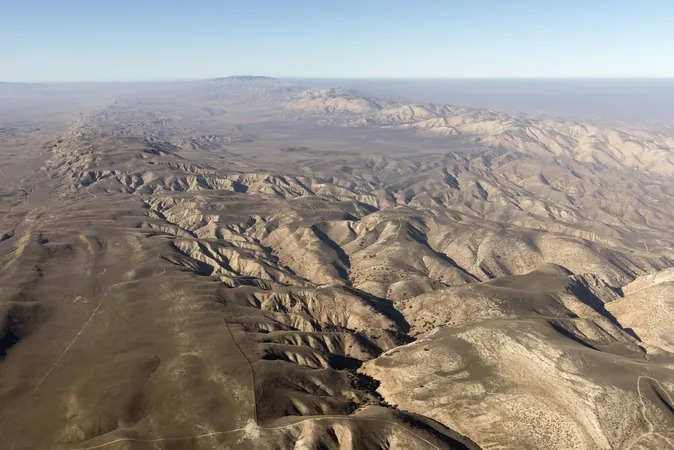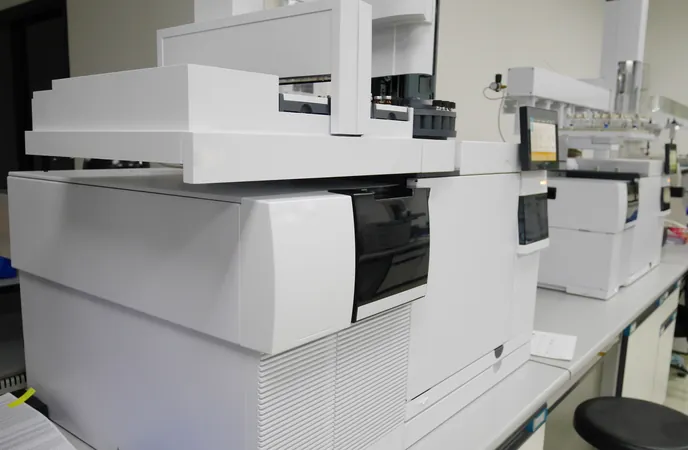
Revolutionary Lab Breakthrough Could Change How We Predict Earthquakes!
2025-06-06
Author: Daniel
A Game-Changer in Earthquake Prediction
Researchers have made a groundbreaking discovery with a laboratory model that links the microscopic contact areas of fault surfaces to the likelihood of earthquakes. Published in the prestigious Proceedings of the National Academy of Sciences, this study sheds new light on the intricate mechanics of earthquakes and offers fresh avenues for prediction.
Leading the charge is Sylvain Barbot, an Earth sciences associate professor at USC Dornsife, who states, "We've essentially opened a window into the heart of earthquake mechanics." By studying how contact areas between fault surfaces evolve over time, the team has made significant strides in understanding both the gradual accumulation of stress and the sudden rupture that occurs.
Unveiling the Secrets of Fault Mechanics
For years, scientists leaned on empirical models known as "rate-and-state" friction laws to depict earthquake behavior, but these have often fallen short of explaining the physics involved. Barbot highlights that their new model reveals the reality of interactions at the fault interface, transforming our comprehension of earthquakes.
The concept may seem simple: when two rough surfaces slide together, they only make contact at tiny, isolated points. These minuscule contact areas—measurable through sophisticated optical techniques—emerge as the pivotal factor influencing earthquake dynamics.
Watching Earthquakes in Real Time
Utilizing transparent acrylic, the research team was able to visualize earthquake ruptures as they transpired. Armed with high-speed cameras and advanced optical measurements, they tracked changes in LED light transmission that corresponded with the formation and destruction of contact junctions. Barbot notes, "We can literally watch the contact area evolve as ruptures propagate, revealing stunning details about the nature of earthquakes."
In moments of rapid rupture, approximately 30% of the contact area vanished in mere milliseconds—an astounding weakening event that drives the quake itself.
From Simulation to Real-World Application
The researchers conducted 26 simulated earthquake scenarios, confirming that the relationship between rupture speed and fracture energy adhered to linear elastic fracture mechanics. Their simulations accurately mirrored both slow and fast quakes, showcasing matching rupture speeds and stress drops alongside light transmission across the fault interface.
As these contact areas fluctuate, they influence various measurable factors, including electrical conductivity and seismic wave behavior. Continuous monitoring of these physical markers could pave the way for advanced monitoring techniques in active fault zones.
Paving the Way for Future Predictions
The implications of this research extend well beyond academia. By monitoring the physical state of fault contacts, scientists could develop new systems for short-term earthquake prediction, potentially harnessing electrical conductivity as a key indicator.
Barbot emphasizes, "If we can continuously monitor these properties on natural faults, we might detect early signs of earthquake nucleation, well before seismic waves begin to radiate. This could redefine how we approach earthquake forecasting."
What Lies Ahead?
Looking forward, the researchers aim to extend their findings beyond laboratory conditions to better understand fault behavior in natural settings. Barbot envisions a future where we can identify subtle changes in fault conditions leading up to an earthquake.
"That's the long-term potential of this work," he concludes. With findings co-authored by Baoning Wu, the study illuminates an exciting frontier in earthquake science that may one day lead to reliable predictions!




 Brasil (PT)
Brasil (PT)
 Canada (EN)
Canada (EN)
 Chile (ES)
Chile (ES)
 Česko (CS)
Česko (CS)
 대한민국 (KO)
대한민국 (KO)
 España (ES)
España (ES)
 France (FR)
France (FR)
 Hong Kong (EN)
Hong Kong (EN)
 Italia (IT)
Italia (IT)
 日本 (JA)
日本 (JA)
 Magyarország (HU)
Magyarország (HU)
 Norge (NO)
Norge (NO)
 Polska (PL)
Polska (PL)
 Schweiz (DE)
Schweiz (DE)
 Singapore (EN)
Singapore (EN)
 Sverige (SV)
Sverige (SV)
 Suomi (FI)
Suomi (FI)
 Türkiye (TR)
Türkiye (TR)
 الإمارات العربية المتحدة (AR)
الإمارات العربية المتحدة (AR)